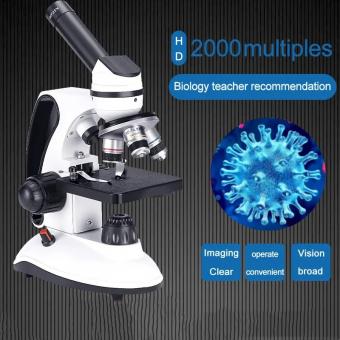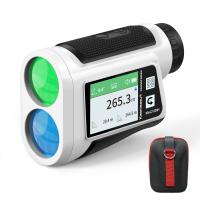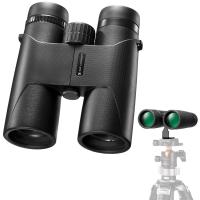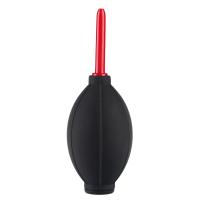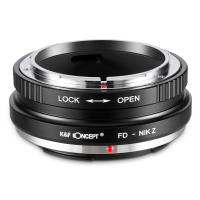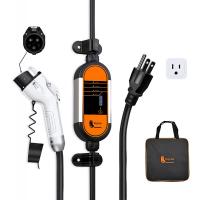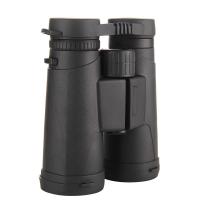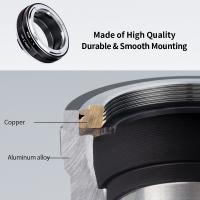B How Can Bacteria Be Enumerated Under Microscope ?
Bacteria can be enumerated under a microscope using various techniques. One common method is the direct microscopic count, where a known volume of a bacterial suspension is placed on a microscope slide and the bacteria are counted using a high-power objective. Another method is the serial dilution technique, where the bacterial suspension is diluted in a series of tubes, and a small volume from each dilution is spread on an agar plate. The colonies that grow on the plate can then be counted. Additionally, the most probable number (MPN) method can be used, which involves inoculating multiple tubes with different dilutions of the bacterial suspension and observing growth or absence of growth to estimate the bacterial count. These methods allow for the quantification of bacteria under a microscope, providing valuable information for research, medical, and industrial purposes.
1、 Direct Microscopic Count
Bacteria can be enumerated under a microscope using a technique called Direct Microscopic Count. This method involves counting the number of bacteria present in a known volume of a sample using a microscope and a counting chamber.
To perform a Direct Microscopic Count, a small volume of the bacterial sample is placed on a microscope slide and covered with a coverslip. The sample is then observed under a microscope using a high-power objective lens. The bacteria are counted by moving the microscope stage in a systematic manner and counting the number of bacteria in a specific area of the counting chamber.
The counting chamber used for this technique is typically a specialized slide with a grid pattern etched onto it. The grid helps in counting the bacteria accurately by providing a defined area for counting. The number of bacteria counted in the grid area is then used to calculate the concentration of bacteria in the original sample.
It is important to note that Direct Microscopic Count provides a rapid and direct method for enumerating bacteria. However, it has some limitations. One limitation is that it cannot differentiate between live and dead bacteria. Additionally, it may not be suitable for samples with low bacterial concentrations, as it may be difficult to count a sufficient number of bacteria accurately.
In recent years, advancements in microscopy techniques have allowed for more accurate and efficient enumeration of bacteria. Fluorescence microscopy, for example, utilizes fluorescent dyes that specifically bind to bacterial cells, making them easier to visualize and count. Automated image analysis software has also been developed to aid in the enumeration process, reducing human error and increasing efficiency.
In conclusion, Direct Microscopic Count is a valuable technique for enumerating bacteria under a microscope. However, it is important to consider its limitations and explore newer techniques that offer improved accuracy and efficiency.

2、 Serial Dilution and Plate Count
Bacteria can be enumerated under a microscope using the method of serial dilution and plate count. This technique involves diluting a sample of bacteria in a series of tubes, followed by plating the diluted samples onto agar plates and counting the number of colonies that grow.
To begin, a small amount of the bacterial sample is added to a tube containing a known volume of sterile diluent. The sample is then mixed thoroughly to ensure even distribution of bacteria. From this initial dilution, a series of additional dilutions are made by transferring a small volume of the diluted sample to the next tube containing fresh diluent. This process is repeated several times, resulting in a range of dilutions.
Next, a small volume of each diluted sample is plated onto agar plates using a sterile spreader or pipette. The plates are then incubated at an appropriate temperature and time for the bacteria to grow and form visible colonies. Each colony represents a single viable bacterium.
After incubation, the plates are examined under a microscope to count the number of colonies on each plate. The number of colonies is then multiplied by the dilution factor to determine the number of bacteria in the original sample.
It is important to note that this method provides an estimate of the viable bacterial count, as not all bacteria may grow under the specific conditions used. Additionally, some bacteria may form clusters or chains, making it difficult to accurately count individual colonies.
In recent years, alternative methods for bacterial enumeration have been developed, such as flow cytometry and automated cell counting systems. These techniques offer faster and more accurate results compared to traditional plate counting methods. However, serial dilution and plate count remains a widely used and reliable method for bacterial enumeration, particularly in research and clinical laboratories.

3、 Membrane Filtration
Bacteria can be enumerated under a microscope using various methods, one of which is membrane filtration. This technique involves filtering a known volume of liquid sample through a membrane filter with a specific pore size, typically 0.45 μm or 0.2 μm. The filter retains the bacteria while allowing the liquid to pass through. The filter is then placed on a nutrient agar plate and incubated to allow bacterial colonies to grow. The colonies can then be counted and used to estimate the number of bacteria in the original sample.
Membrane filtration is a widely used method for bacterial enumeration due to its simplicity and reliability. It allows for the concentration of bacteria from large volumes of liquid samples, making it particularly useful for environmental and water quality testing. Additionally, it can be used to enumerate both culturable and non-culturable bacteria, providing a more comprehensive assessment of bacterial populations.
In recent years, there have been advancements in membrane filtration techniques to improve accuracy and efficiency. For example, the use of selective media on the agar plates can help in the enumeration of specific bacterial species or groups. This allows for a more targeted analysis of bacterial populations, which can be particularly important in certain applications such as food safety testing.
Furthermore, the development of automated systems for membrane filtration has streamlined the process, reducing the time and effort required for bacterial enumeration. These systems can handle larger sample volumes and provide faster results, making them valuable tools in research and industrial settings.
In conclusion, membrane filtration is a reliable and widely used method for bacterial enumeration under a microscope. With advancements in selective media and automated systems, this technique continues to evolve, providing more accurate and efficient results for various applications.

4、 Most Probable Number (MPN) Method
Bacteria can be enumerated under a microscope using various methods, one of which is the Most Probable Number (MPN) method. This method is commonly used to estimate the number of viable bacteria in a sample.
The MPN method involves diluting the sample and inoculating it into a series of tubes or wells containing a growth medium. The dilutions are made in a way that allows for statistical analysis of the results. The tubes or wells are then observed under a microscope for the presence of bacterial growth. The number of positive tubes or wells is used to estimate the number of bacteria in the original sample.
The MPN method is based on the principle that the more dilutions required to obtain a positive result, the lower the number of bacteria in the original sample. By using statistical tables, the MPN can be calculated and expressed as the most probable number of bacteria per unit volume of the original sample.
It is important to note that the MPN method has its limitations. It is time-consuming and requires multiple dilutions and observations. Additionally, it only provides an estimate of the bacterial count and does not differentiate between different species or strains of bacteria.
In recent years, alternative methods for bacterial enumeration have been developed, such as flow cytometry and molecular techniques like quantitative polymerase chain reaction (qPCR). These methods offer faster and more accurate results compared to the MPN method. However, the MPN method still remains a valuable tool in certain situations, especially when dealing with large sample sizes or when specific bacterial species need to be enumerated.
In conclusion, the Most Probable Number (MPN) method is a traditional approach to enumerate bacteria under a microscope. While newer methods have emerged, the MPN method still holds its place in bacterial enumeration, providing estimates of bacterial counts in a sample.














